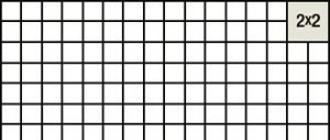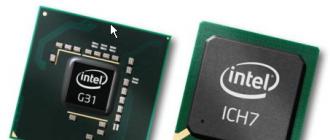Transistors MP39, MP40, MP41, MP42.
Transistors MP39, MP40, MP41, MP42- germanium, low-power low-frequency amplifying, p-n-p structures.
Metal-glass housing with flexible leads. Weight - about 2 g. Alphanumeric marking on the side surface of the case.
There are the following foreign analogues:
MP39 -2N1413
MP40 - 2N104
MP41 possible analogue - 2N44A
MP42 possible analogue - 2SB288
The most important parameters.
Current transfer ratio
for MP39 transistors rarely exceeds 12
, for MP39B it ranges from 20
before 60
.
For transistors MP40, MP40A - from 20
before 40
.
For transistors MP41 - from 30
before 60
, MP41A - from 50
before 100
.
for transistors MP42 - from 20
before 35
, MP42A - from 30
before 50
, MP42B - from 45
before 100
.
The maximum collector-emitter voltage.
For transistors MP39, MP40 - 15
v.
For transistors MP40A - 30
v.
For transistor MP41, MP41A, MP42, MP42A, MP42B - 15
v.
Limiting frequency of current transfer ratio
(fh21e) transistor for circuits with a common emitter:
Before 0,5
MHz for transistors MP39, MP39A.
Before 1
MHz for transistors MP40, MP40A, MP41, MP42B.
Before 1,5
MHz for MP42A transistors.
Before 2
MHz for MP42 transistors.
Maximum collector current. - 20 mA constant, 150 mA - pulsating.
Collector reverse current at a collector-base voltage of 5V and an ambient temperature of -60 to +25 Celsius, no more - 15 μA.
Reverse emitter current with an emitter-base voltage of 5V and an ambient temperature of up to +25 Celsius, no more - 30 μA.
Collector junction capacity at a collector-base voltage of 5V at a frequency of 1MHz - no more 60 pF.
Self-noise figure - for MP39B with a collector-base voltage of 1.5V and an emitter current of 0.5mA at a frequency of 1KHz - no more 12 db.
Collector power dissipation.
U MP39, MP40, MP41 - 150
mW.
MP42 - 200
mW.
Once upon a time, transistors of this series were used to complement widely used radio construction kits for beginners. MP39-MP42 with their rather large dimensions, long flexible leads and simple pinout (pinout) were ideal for this. In addition, the relatively large reverse current allowed them to operate in a common emitter circuit, without additional bias. Those. - the simplest amplifier was going really, on one transistor, without resistors. This made it possible to significantly simplify the schemes at the initial stages of design.

Pinout of the MP41 transistor
Designation of the MP41 transistor in the diagrams
In schematic diagrams, the transistor is indicated by both an alphabetic code and a conventional graphic. The alphabetic code consists of the Latin letters VT and a number (serial number in the diagram). The conventional graphic designation of the MP41 transistor is usually placed in a circle symbolizing its case. A short dash with a line from the middle symbolizes the base, two oblique lines drawn to its edges at an angle of 60 ° - the emitter and the collector. The emitter has an arrow pointing towards the base.
Characteristics of the MP41 transistor
- Structure p-n-p
- 15 * (10k) B
- 20 (150 *) mA
- 0.15W
- 30 ... 60 (5 V; 1 mA)
- Collector reverse current
- > 1 * MHz
- Structure p-n-p
- Maximum allowable (impulse) voltage collector-base 15 * (Зк) В
- Maximum permissible constant (impulse) collector current 150 * mA
- Maximum permissible constant power dissipation of the collector without heat sink (with heat sink) 0.2 watts
- Static current transfer ratio of a bipolar transistor in a common emitter circuit 20 ... 35 * (1 V; 10 mA)
- Collector reverse current - μA
- The cutoff frequency of the current transfer coefficient in the circuit with a common emitter > 2 * MHz
Pinout of the MP42 transistor
Designation of the MP42 transistor in the diagrams
In schematic diagrams, the transistor is indicated by both an alphabetic code and a conventional graphic. The alphabetic code consists of the Latin letters VT and a number (serial number in the diagram). The conventional graphic designation of the MP42 transistor is usually placed in a circle symbolizing its case. A short dash with a line from the middle symbolizes the base, two oblique lines drawn to its edges at an angle of 60 ° - the emitter and the collector. The emitter has an arrow pointing towards the base.
Characteristics of the MP42 bipolar transistor
- Structure p-n-p
- Maximum allowable (impulse) voltage collector-base 15 * (Зк) В
- Maximum permissible constant (impulse) collector current 150 * mA
- Maximum permissible constant power dissipation of the collector without heat sink (with heat sink) 0.2 watts
- Static current transfer ratio of a bipolar transistor in a common emitter circuit 20 ... 35 * (1 V; 10 mA)
- Collector reverse current - μA
- The cutoff frequency of the current transfer coefficient in the circuit with a common emitter > 2 * MHz
Transistors MP39, MP40, MP41, MP42.
Transistors MP39, MP40, MP41, MP42- germanium, low-power low-frequency amplifying, p-n-p structures.
Metal-glass housing with flexible leads. Weight - about 2 g. Alphanumeric marking on the side surface of the case.
There are the following foreign analogues:
MP39 -2N1413
MP40 - 2N104
MP41 possible analogue - 2N44A
MP42 possible analogue - 2SB288
The most important parameters.
Current transfer ratio
for MP39 transistors rarely exceeds 12
, for MP39B it ranges from 20
before 60
.
For transistors MP40, MP40A - from 20
before 40
.
For transistors MP41 - from 30
before 60
, MP41A - from 50
before 100
.
for transistors MP42 - from 20
before 35
, MP42A - from 30
before 50
, MP42B - from 45
before 100
.
The maximum collector-emitter voltage.
For transistors MP39, MP40 - 15
v.
For transistors MP40A - 30
v.
For transistor MP41, MP41A, MP42, MP42A, MP42B - 15
v.
Limiting frequency of current transfer ratio
(fh21e) transistor for circuits with a common emitter:
Before 0,5
MHz for transistors MP39, MP39A.
Before 1
MHz for transistors MP40, MP40A, MP41, MP42B.
Before 1,5
MHz for MP42A transistors.
Before 2
MHz for MP42 transistors.
Maximum collector current. - 20 mA constant, 150 mA - pulsating.
Collector reverse current at a collector-base voltage of 5V and an ambient temperature of -60 to +25 Celsius, no more - 15 μA.
Reverse emitter current with an emitter-base voltage of 5V and an ambient temperature of up to +25 Celsius, no more - 30 μA.
Collector junction capacity at a collector-base voltage of 5V at a frequency of 1MHz - no more 60 pF.
Self-noise figure - for MP39B with a collector-base voltage of 1.5V and an emitter current of 0.5mA at a frequency of 1KHz - no more 12 db.
Collector power dissipation.
U MP39, MP40, MP41 - 150
mW.
MP42 - 200
mW.
Once upon a time, transistors of this series were used to complement widely used radio construction kits for beginners. MP39-MP42 with their rather large dimensions, long flexible leads and simple pinout (pinout) were ideal for this. In addition, the relatively large reverse current allowed them to operate in a common emitter circuit, without additional bias. Those. - the simplest amplifier was going really, on one transistor, without resistors. This made it possible to significantly simplify the schemes at the initial stages of design.

Pinout of the MP41 transistor
Designation of the MP41 transistor in the diagrams
In schematic diagrams, the transistor is indicated by both an alphabetic code and a conventional graphic. The alphabetic code consists of the Latin letters VT and a number (serial number in the diagram). The conventional graphic designation of the MP41 transistor is usually placed in a circle symbolizing its case. A short dash with a line from the middle symbolizes the base, two oblique lines drawn to its edges at an angle of 60 ° - the emitter and the collector. The emitter has an arrow pointing towards the base.
Characteristics of the MP41 transistor
- Structure p-n-p
- 15 * (10k) B
- 20 (150 *) mA
- 0.15W
- 30 ... 60 (5 V; 1 mA)
- Collector reverse current
- > 1 * MHz
- Structure p-n-p
- Maximum allowable (impulse) voltage collector-base 15 * (Зк) В
- Maximum permissible constant (impulse) collector current 150 * mA
- Maximum permissible constant power dissipation of the collector without heat sink (with heat sink) 0.2 watts
- Static current transfer ratio of a bipolar transistor in a common emitter circuit 20 ... 35 * (1 V; 10 mA)
- Collector reverse current - μA
- The cutoff frequency of the current transfer coefficient in the circuit with a common emitter > 2 * MHz
Pinout of the MP42 transistor
Designation of the MP42 transistor in the diagrams
In schematic diagrams, the transistor is indicated by both an alphabetic code and a conventional graphic. The alphabetic code consists of the Latin letters VT and a number (serial number in the diagram). The conventional graphic designation of the MP42 transistor is usually placed in a circle symbolizing its case. A short dash with a line from the middle symbolizes the base, two oblique lines drawn to its edges at an angle of 60 ° - the emitter and the collector. The emitter has an arrow pointing towards the base.
Characteristics of the MP42 bipolar transistor
- Structure p-n-p
- Maximum allowable (impulse) voltage collector-base 15 * (Зк) В
- Maximum permissible constant (impulse) collector current 150 * mA
- Maximum permissible constant power dissipation of the collector without heat sink (with heat sink) 0.2 watts
- Static current transfer ratio of a bipolar transistor in a common emitter circuit 20 ... 35 * (1 V; 10 mA)
- Collector reverse current - μA
- The cutoff frequency of the current transfer coefficient in the circuit with a common emitter > 2 * MHz
A low-frequency power amplifier based on germanium transistors P213, a schematic diagram of which is shown in Fig. 1, can be used to reproduce a gramophone record, as a low-frequency part of the receiver (from GnZ, Gn4 sockets), as well as to amplify signals from sensors of adapted musical instruments (from Gn1, Gn2 sockets).
- Amplifier sensitivity from GnI, Gn2 sockets - 20 mV, from Gn3, Gn4 sockets - no worse than 250 mV;
- Output power at a load of 6.5 ohms -2 W;
- nonlinear distortion factor - 3%;
- Reproducible frequency band 60-12000 Hz;
- In the silent mode, the amplifier consumes a current of about 8 mA, and in the maximum power mode - 210 mA.
- The amplifier can be powered either from batteries or from a 127 or 220 V AC network.
Schematic diagram
As can be seen from the schematic diagram, the first amplification stage is assembled on a low-noise transistor MP39B (T1) according to the scheme with a common emitter. The amplified signal is fed to the potentiometer R1, from the slider of which, through the resistor R2 and the blocking capacitor C1, the low frequency signal enters the base of the transistor. The first stage of the amplifier is loaded with resistor R5.
Voltage divider R3, R4 and resistor R6 are temperature stabilization elements. The presence of the divider R3, R4 makes the voltage at the base of the transistor T1 little dependent on temperature. Resistor R6 in the emitter circuit provides negative DC feedback.
As the temperature rises, the current in the emitter circuit increases and the voltage drop across the resistor R6 increases. As a result, the voltage between the base and the emitter becomes less negative, which prevents further increases in the emitter current. The second stage of amplification is also assembled according to the scheme with a common emitter on the MP39B (T2) transistor.
To reduce the dependence of the parameters of this stage on temperature, it uses a combined negative feedback determined by resistors R8, R9 and R10. The voltage amplified by the first stage is applied to the input of the second stage through the blocking capacitor C2. The load of the transistor T2 is the resistor R7.
The third stage of amplification is assembled on the T3 transistor. The stage is loaded with resistor RI8. The connection between the second and third stages is carried out using a capacitor C3.

The output stage of the amplifier operates in a class B mode in a series-parallel circuit. The main advantage of amplifiers of this class over amplifiers operating in class A is their high efficiency.
When designing conventional low-frequency amplifiers, radio amateurs are faced with the task of manufacturing transition and output transformers. Small-sized transformers with a permalloy core are quite difficult to manufacture. In addition, transformers reduce overall efficiency and in many cases are a source of harmonic distortion.
Recently, output stages without transformers have been developed - with quasi-additional symmetry, that is, using transistors that have different types of transitions and complement each other to excite a push-pull amplifier.
The transformerless stage is assembled on two powerful transistors T6, T7 with excitation from a pair of complementary symmetrical transistors T4 and T5, operating in the pre-final amplification stage. Depending on the polarity of the signal supplied from the collector of the transistor T3, then one (T4), then the other (T5) transistor is unlocked. At the same time, the associated transistors T6, T7 open. If on the collector of transistor T3 the amplified signal has negative polarity, transistors T4, T6 open, if the signal has positive polarity, transistors T5 and T7 open.
The constant component of the collector current, passing through the thermostabilizing diode D1 and the resistor R19, creates a bias at the bases of the transistors T4, T5, which function as phase inverters. This offset eliminates the inherent distortion caused by the nonlinearity of the input characteristics at low base currents.
Resistors R22, R23 reduce the influence of the spread in the parameters of transistors T4, T3 on the operating mode of the output stage. Separating capacitor C9.
In order to reduce nonlinear distortions, the amplification stages on transistors T3 - T7 are covered by negative AC feedback, the voltage of which is removed from the output of the final amplifier and through the chain R17, C8, R16, R15, C6, R14 is fed to the base of the transistor T3. In this case, the variable resistor R17 provides tone control in the low-frequency region, and the potentiometer R15 - in the high-frequency region.
If tone control is not required, then parts R14 - R17. C6, C8 are excluded from the scheme. The feedback circuit in this case is formed by the resistor R0 (in Fig. 1, this circuit is shown with a dashed line).
For normal operation of the output stage, the voltage at point "a" (quiescent voltage) must be equal to half the voltage of the power supply. This is achieved by appropriately selecting the resistor RI8. Quiescent voltage stabilization is provided by a negative DC feedback circuit.
As can be seen from the diagram, point "a" at the output of the amplifier is connected to the base circuit of the T3 transistor using a resistor R12. The presence of this connection automatically maintains the voltage at point "a" equal to half the voltage of the power supply (in this case equal to ba).
For normal operation of the amplifier, it is also necessary that the transistors T4, T5 and T6, T7 have as little reverse current as possible. The magnitude of the gain (5 transistors T4-T7 should be in the range of 40 - 60; moreover, the transistors can have different gains h. It is only necessary that the equality h4 * hb = h5 * h7.
Details and installation
The amplifier is mounted on a getinax panel with a thickness of 1 - 1.5 mm. The dimensions of the board are highly dependent on the scope of the amplifier. To ensure good heat dissipation, P213B transistors are equipped with radiators with a total cooling surface of at least 100 cm2.
The amplifier can be powered from a 12 V battery, assembled from Saturn cells, or from batteries for a flashlight. The amplifier is powered from the alternating current network using a rectifier assembled in a bridge circuit on four diodes D1-D4 with a capacitive filter through a voltage stabilizer (Fig. 2).
As mentioned above, when the amplifier is operating, the current consumed by it varies over a fairly wide range. Sudden current fluctuations will inevitably cause a change in the supply voltage, which can lead to unwanted connections in the amplifier and signal distortion. To prevent such phenomena, the stabilization of the rectified voltage is provided.
The stabilizer includes transistors T7, T2 and a Zener diode D5. This stabilizer, when the load current changes from 5 to 400 mA, provides a stable voltage of 12 V, and the ripple amplitude does not exceed 5 mV. The stabilization of the supply voltage occurs due to the voltage drop across the transistor T2.
This difference depends on the bias at the base of the transistor T2, which, in turn, depends on the value of the reference voltage across the resistor R2 and the voltage across the load (Rload).
Transistor T2 is mounted on a radiator. The rectifier is housed in a box with dimensions 60X90X130 mm, which is made of sheet steel with a thickness of 1 mm.
The power transformer is made on the Ш12 core, the thickness of the set is 25 mm. Winding I (127 V) contains 2650 turns of PEL 0.15 wire, winding II (220 V) - 2190 turns of PEL 0.12, winding III - 420 turns of PEL 0.55.
Adjustment
An amplifier assembled from proven parts and transistors usually starts working immediately. By connecting the power supply (12 V), the resistors R3, R8, R12, R18 set the recommended mode. Then, through the blocking capacitor C3, which is previously disconnected from the collector of the transistor T2, a voltage is supplied to the amplifier input from the sound generator (0.2 V, frequency 1000 Hz).
The feedback loop at point "b" must be broken. The control of the output voltage waveform is observed with an oscilloscope connected in parallel with the loudspeaker. If there are large "steps" at the junctions of the half-waves, the value of the resistor R19 must be clarified.
It is selected for minimal distortion, which almost completely disappear when the feedback loop is turned on. The establishment of other cascades is no different in any way. In those cases when a sensitivity of the order of 250 mV is required from the amplifier, the first two stages on transistors T1, T2 can be excluded from the circuit.
Low frequency. Germanium alloy transistors p- n - R MP39B, MP40A, MP41A are used to work in LF amplification circuits and are produced in a metal case (Fig. 56, a - c) with glass insulators and flexible leads, weighing 2.5 g, with an operating temperature range from -60 to +70 ° WITH. Electrical parameters are given in table. 109.
Silicon pnp transistors MP 114, MP 115, MP116 are produced in a metal case with glass insulators and flexible leads (Fig. 57), weighing 1.7 g, with a range of operating temperatures from -55 to + 100 ° C. Electrical parameters are given in table. 110.
Rice. 56. Pinout and overall dimensions of transistors MP39V, MP40A, MP41A (a) and their input (6) and output (c) characteristics in a circuit with a common base

Rice. 57. Pinout and overall dimensions of transistors MP114 - MP116
Table 109
Collector reverse current, μA, at U K b = - 5 V and temperature, ° C:
20 ............... 15
70 ............... 300
Emitter reverse current, μA, at U Eb = - 5 V 30
The greatest direct current of the collector, mA 20
Collector capacity, pF, at U K6 = 5 In and
f = 500 kHz .............. 60
The largest pulse collector current,
mA, at I ESr<40 мА......... 150
Output conductivity, μS, at I e = 1 mA,
U „b = 5 V and f = 1 kHz .......... 3.3
Base resistance, Ohm, at I e = 1 mA,
U kb = 5 V and f = 500 kHz ......... 220
Collector dissipated power, mW, at temperature, ° С:
55 ............... 150
70................ 75
Negative voltage U e in, V .... 5
Table 110
Collector reverse current, mA, at U to = - 30 V and temperature 20 and 100 ° С, respectively ... 10 and 400
Reverse current of the emitter, μA, at U eb = - 10 V and a temperature of 20 and 100 ° C, respectively. ... ... - 10 and 200
Input resistance, Ohm, in the circuit with OB at LU = - 50 V, I e = 1 mA, f = 1 kHz ....... 300
Collector dissipated power, mW, at 70 ° С ................. 150
Medium frequency. Pnp transistors KT203 (A, B, C) are used to amplify and generate oscillations in the range up to 5 MHz, to work in switching and stabilization circuits and are produced in a metal case with flexible leads (Fig. 58), weighing 0.5 g, with a working range temperatures from - 60 to + 125 ° С. The electrical parameters of the transistors are given in table. 111.

Rice. 58. Pinout and overall dimensions of transistors KT203A - B
Table 111
Collector reverse current, μA, at the highest reverse voltage and temperature of 25 and 125 ° С, respectively ............... 1 and 15
Emitter reverse current, μA, at U e 6 = - 30 V. 10
Collector junction capacitance, pF, at U K b = 5 V and f = 10 MHz ............. 10
Collector current, mA: constant .............. 10
pulse .............. 50.
Average value of emitter current in pulsed mode, mA ................. 10
The power dissipated by the collector, MW, at temperatures up to 70 ° C ......... V. ... 150
* For transistors KT203A - K.T203V voltage u k q respectively equal to 50, 30 at 15 V,
High frequency. Pnp conversion transistors GT321
(A - E) are produced in a metal case with flexible leads (Fig. 59, a), weighing 2 g, with an operating temperature range from -55 to +60 ° C. The electrical parameters of the transistors are given in table. 112.









